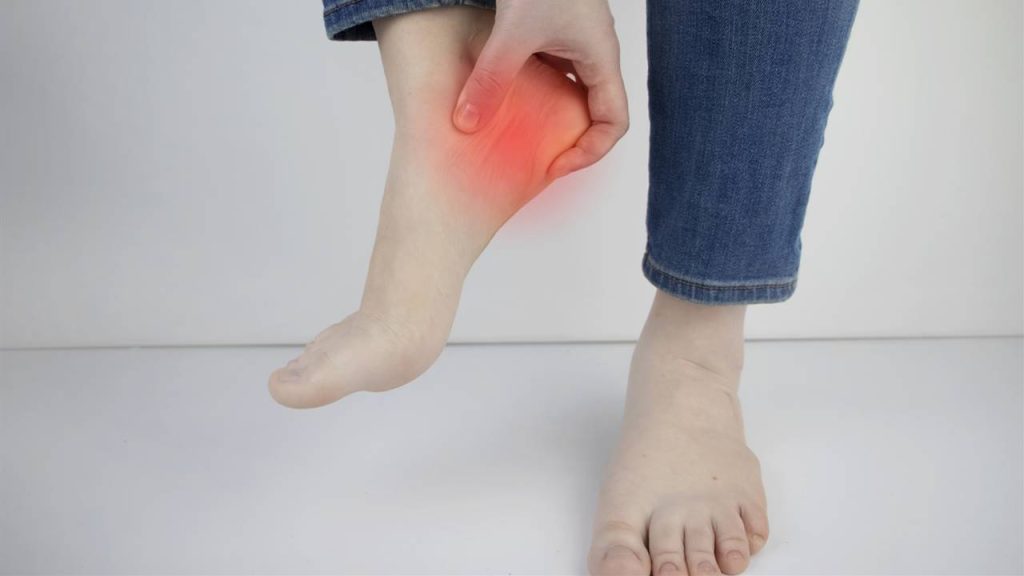Noticing a puncture in your heel when you get up may indicate that you have a heel spur, a calcification in your heel. Find out why it happens and how to treat it with natural solutions.

- What is the heel spur?
- What symptoms does heel spur cause?
- Is it good to ride with a spur?
- How to treat a heel spur naturally?
The feet support us, keep us in touch with the earth and allow our movement. Despite their importance, we do not always give them the attention they need and, sometimes, we even mistreat them with inappropriate shoes that harm our footprint, we overload them … something that can lead to problems such as the heel spur. We explain why this annoying problem occurs in the feet and how to treat it naturally.
CALCANEAL SPUR: WHAT IS IT
A heel spur (also called calcaneal exostosis) is a calcification in the heel that causes a beak or tip thickening of the heel bone (called the calcaneus). This growth of bone causes the tissues around it to become inflamed.
It occurs, in many cases, as a result of plantar fasciitis that has become chronic. Plantar fasciitis is inflammation of the thick band that runs along the sole of the foot (plantar fascia) from the heel bone to the toes. The body accumulates calcium in the injured areas so that the tissue regenerates and this is how the heel spur ends up appearing.
Plantar fasciitis (and, therefore, the heel spur) is usually due to overload (from running, jumping or standing for many hours, for example, or due to obesity), the use of inappropriate footwear (with a lot of heels or that does not adapt the foot well), by having flat feet or cavus (with too much bridge), shortening of the Achilles tendon or bursitis (inflammation of the synovial bursa) at the insertion of the plantar fascia.
CALCANEAL SPUR: SYMPTOMS
The main symptom of a heel spur is a stabbing pain on the inside of the heel when supporting the foot, as if you were sticking a stone or a nail.
The pain can become very intense and cause lameness when walking. It is more intense when you get up after sitting or lying down, for example, when you put your feet on the ground in the morning, or when running and punctures can also spread to the sole of the foot. When you’re at rest, the pain usually goes away.
In some cases, the heel spur does not cause any discomfort and can only be detected through an X-ray.
IS IT GOOD TO RIDE WITH A SPUR?
If the spur causes pain when walking, it is advisable to reduce the activity and always use appropriate footwear (not too high and that adapts well to the foot), as well as reduce the intensity and frequency of sports practice. It is also advisable to lose weight to lighten the pressure on the sole of the foot.
- In some cases, the pain is so severe that it becomes disabling.
CAN A HEEL SPUR BE TREATED NATURALLY?
The treatment of heel spur, apart from modifying the causes that cause it (overload, inadequate footwear, obesity), may include the use of personalized orthopedic insoles to loosen the fascia, laser therapy, anti-inflammatory drugs and, ultimately, if the most conservative measures do not work and the spur interferes a lot in the daily life of the person, it may be necessary to operate.
There are also other natural treatments that can be very helpful, such as acupuncture, which has been shown to reduce pain in some people.
Stretching, massage and exercises to educate the feet, such as those you can find in this article, are also a very interesting option.
When you notice pain, the cold can help soothe inflamed heel tissue. One option is to apply a cloth-covered ice bag on the heel (never apply ice directly to the skin) for about 10 to 15 minutes. In the pharmacy you can also find bags of gel that are put in the freezer and adapt to the foot to make it easier for you to keep the cold in the right place.
On the other hand, some essential oils, such as eucalyptus or lavender, can act as natural anti-inflammatories to reduce both pain and swelling. Keep in mind that you should dilute them enough in vegetable oil and follow the instructions of a specialist before using them to massage your heels.






